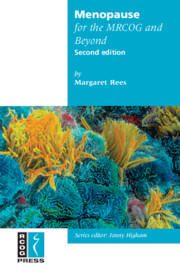Book contents
- Frontmatter
- Contents
- Preface
- Abbreviations
- 1 Definitions and controversies
- 2 Explaining risk
- 3 Systemic hormone replacement therapy
- 4 Non-HRT options for osteoporosis
- 5 Diet and lifestyle
- 6 Alternative and complementary therapies
- 7 Vasomotor symptoms, urogenital and sexual problems
- 8 Osteoporosis and autoimmune arthritis
- 9 Breast disease
- 10 Benign and malignant gynaecological disease
- 11 Premature menopause
- 12 Women with concomitant medical conditions
- Index
9 - Breast disease
Published online by Cambridge University Press: 05 July 2014
- Frontmatter
- Contents
- Preface
- Abbreviations
- 1 Definitions and controversies
- 2 Explaining risk
- 3 Systemic hormone replacement therapy
- 4 Non-HRT options for osteoporosis
- 5 Diet and lifestyle
- 6 Alternative and complementary therapies
- 7 Vasomotor symptoms, urogenital and sexual problems
- 8 Osteoporosis and autoimmune arthritis
- 9 Breast disease
- 10 Benign and malignant gynaecological disease
- 11 Premature menopause
- 12 Women with concomitant medical conditions
- Index
Summary
Breast cancer
Worldwide, more than a million women are diagnosed with breast cancer every year, accounting for 10% of all new cancers and 23% of all female cancer cases. Breast cancer incidence rates vary considerably, with the highest rates in the developed world and the lowest rates in Africa and Asia. The lifetime risk (to 85 years of age) of developing breast cancer in developed countries worldwide is 11% (one in nine). Around 361000 new cases of breast cancer occur each year in Europe and 210000 in the USA. The lowest European rates are in eastern and southern Europe and the highest are in Denmark, Belgium, Sweden and the Netherlands.
Virtually all invasive breast cancers are adenocarcinomas (derived from glandular tissue), either ductal (85%) or lobular (15%). Some breast cancers are called in situ since they have not yet spread beyond the area where they began. The presence of lobular carcinoma in situ increases the risk of developing cancer in either breast, whereas ductal carcinoma in situ (DCIS) may progress to invasive cancer within the affected breast. DCIS is now detected more frequently because of the widespread use of mammography.
RISK FACTORS FOR BREAST CANCER
Several factors are associated with an increased risk of breast cancer (age, family history, age at first full-term pregnancy, early menarche and late menopause) (Table 8). The strongest risk factors for breast cancer are age and family history, especially a first-degree relative (see below). Some risk factors increase lifetime exposure to estrogen (early menarche, late menopause, obesity, use of HRT).
- Type
- Chapter
- Information
- Menopause for the MRCOG and Beyond , pp. 73 - 84Publisher: Cambridge University PressPrint publication year: 2008

